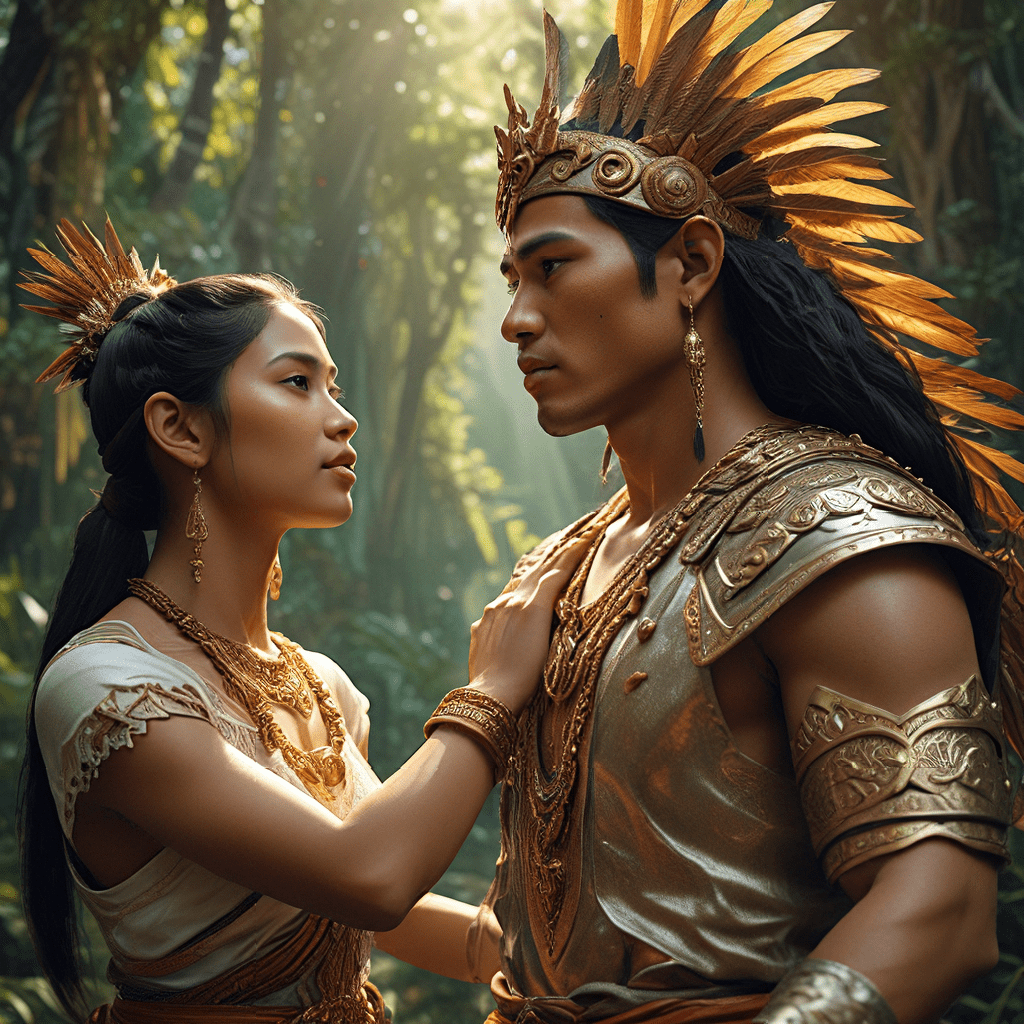Filipino Mythology: A Tapestry of Lore
The Philippines, a nation of vibrant culture and rich history, boasts a captivating tapestry of myths and legends woven through generations. Known as "Filipino Mythology," this collection of stories encompasses a diverse range of creatures, deities, and heroes, each reflecting the beliefs, values, and aspirations of the Filipino people. From the mischievous "Duwende" to the powerful "Bathala," these tales offer a glimpse into the soul of a nation, revealing its profound connection to nature, the supernatural, and the enduring power of human relationships.
Friendship and Loyalty in Filipino Folklore
At the heart of Filipino mythology lies a deep appreciation for the values of friendship and loyalty. These themes resonate through countless stories, shaping the moral compass of the culture. From tales of mythical creatures forming unlikely bonds to heroes sacrificing selflessly for their companions, the concept of "pagkakaibigan" (friendship) and "katapatan" (loyalty) is woven into the very fabric of Filipino folklore. It is through these stories that Filipinos learn the importance of standing by one another, of honoring commitments, and of cherishing the bonds that make life meaningful.
The Value of “Bayanihan” in Myths and Legends
"Bayanihan," a term that encapsulates the spirit of communal cooperation, is a central theme in many Filipino myths and legends. It embodies the Filipino belief in the power of collective action, highlighting the importance of working together to achieve a common goal. This concept is often portrayed in stories involving mythical creatures, deities, and even ordinary individuals who are shown working together to overcome challenges, protect their communities, and celebrate their triumphs. The spirit of "bayanihan" is not just a concept in Filipino mythology; it is a lived experience, a guiding principle that informs the way Filipinos interact with one another in everyday life.
From Creatures of Myth to Archetypes of Loyalty
Filipino mythology is populated by a fascinating array of mythical creatures, each with its unique characteristics and role in the stories. While some creatures are depicted as mischievous or even dangerous, many serve as powerful symbols of loyalty and friendship. For example, the "Tikbalang," a creature with a horse's head and a human body, is often depicted as a trickster, but also as a faithful companion who will protect those it deems worthy. Similarly, the "Kapre," a giant tree-dwelling creature, is often associated with strength and loyalty, representing the steadfastness of true friendship.
The Role of Spirits and Ancestral Guardians in Fostering Loyalty
In Filipino mythology, the spirit world plays a significant role in shaping the human experience. Spirits, both benevolent and malevolent, are believed to influence the lives of the living, acting as guides, protectors, or even adversaries. The "Anito," ancestral spirits, are revered for their wisdom and guidance, while "Diwata," nature spirits, are often portrayed as guardians of the natural world. These spirits are often depicted as fostering loyalty and unity among humans, reminding them of their interconnectedness and the importance of honoring their traditions. They serve as moral compasses, reminding Filipinos of their responsibilities to their families, communities, and the natural world.
The Tale of “Bernardo Carpio”: A Paragon of Loyalty
One of the most enduring tales of loyalty in Filipino mythology is the story of "Bernardo Carpio," a legendary hero known for his immense strength and unwavering commitment to his homeland. Bernardo Carpio is said to have been a powerful warrior who fought valiantly against the Spanish invaders. His loyalty to his people was unwavering, and he was willing to sacrifice everything to protect them from oppression. The story of Bernardo Carpio highlights the importance of patriotism and the willingness to defend one's country, even in the face of overwhelming odds.
Mythical Creatures as Symbols of Friendship: The “Tikbalang” and the “Kapre”
While many mythical creatures in Filipino mythology are seen as symbols of loyalty, the "Tikbalang" and the "Kapre" stand out as powerful representations of friendship. The "Tikbalang," with its horse's head and human body, is often depicted as a mischievous trickster, but it is also known for its strong sense of loyalty. In some tales, the "Tikbalang" forms unlikely bonds with humans, protecting them from danger and offering them guidance. The "Kapre," a giant tree-dwelling creature, is often associated with strength and loyalty, signifying the enduring nature of true friendship. The "Kapre" is often depicted as a protector of the forest and a loyal companion to those who respect the natural world.
The “Diwata” and the Importance of Community in Filipino Mythology
The "Diwata," nature spirits who dwell in the forests, mountains, and seas of the Philippines, are often portrayed as protectors of the natural world and symbols of community. These benevolent spirits are believed to foster harmony and unity among humans, encouraging them to respect their environment and to work together for the common good. The stories of the "Diwata" emphasize the importance of maintaining balance between the human world and the natural world, and the role of community in ensuring that this balance is maintained.
Theories on the Origins of Filipino Mythology
The origins of Filipino mythology can be traced back to the pre-colonial period when the Philippines was inhabited by numerous indigenous groups. These groups had their own unique beliefs, traditions, and stories about the world around them, which were passed down through generations through oral tradition. Over time, these stories blended together, evolving into the tapestry of myths and legends that we know today. The influence of Hinduism, Buddhism, and Islam from neighboring countries also played a role in shaping Filipino mythology.
The Enduring Impact of These Tales on Filipino Culture
Filipino mythology has had a profound impact on Filipino culture, shaping the beliefs, values, and aspirations of the people. The stories continue to be passed down through generations, providing a sense of identity and continuity. These tales serve as a reminder of the importance of family, community, loyalty, and the interconnectedness of all things. They also offer a rich and vibrant source of inspiration for Filipino art, music, literature, and film.
FAQ
What are some popular Filipino mythological creatures?
Some popular Filipino mythological creatures include the "Tikbalang," "Kapre," "Duwende," "Aswang," and "Manananggal." Each creature has its own unique characteristics and role in Filipino folklore.
What are some of the major themes in Filipino mythology?
Some of the major themes in Filipino mythology include the importance of family, community, loyalty, respect for nature, and the belief in the supernatural.
How does Filipino mythology reflect the values of the Filipino people?
Filipino mythology reflects the values of the Filipino people by emphasizing the importance of "bayanihan" (community cooperation), "pagkakaibigan" (friendship), "katapatan" (loyalty), and "pagmamalasakit" (compassion).




